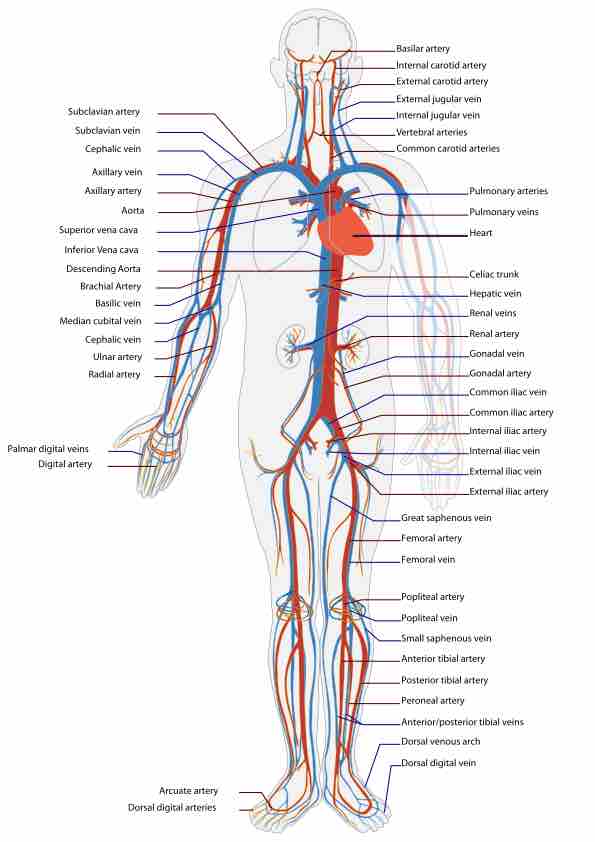Blood plays many critical roles within the body: delivering nutrients and chemicals to tissues, removing waste products, and maintaining homeostasis and health. The circulatory system is transports blood through the body to perform these actions, facilitated by the extensive network of blood vessels.
Gas Transfer
The circulatory system can be split into two sections, systemic and pulmonary. In the systemic circulatory system, highly oxygenated blood (95-100%) is pumped from the left ventricle of the heart and into the arteries of the body. Upon reaching the capillary networks, gas exchange between tissue and blood can occur, facilitated by the narrow walls of the capillaries. Oxygen is released from the blood into the tissues and carbon dioxide, a waste product of respiration, is absorbed. The capillaries merge into venules and then veins, carrying the deoxygenated blood (~75%) back to the right atrium of the heart at the end of the systemic circulatory system.
The much smaller pulmonary system reoxygenates the blood and facilitates the removal of carbon dioxide. After leaving the heart through the right ventricle, the blood passes through the pulmonary artery, the only artery in the body that contains deoxygenated blood, and into the capillary network within the lungs. The close association of the thin-walled alveolae with the equally thin-walled capillaries allows for rapid release of carbon dioxide and uptake of oxygen. After leaving the lungs through the pulmonary vein, the only vein which carries oxygenated blood, the blood enters the left atrium. This completes the pulmonary circulatory system.

The Circulatory System
This simplified diagram of the human circulatory system (anterior view) shows arteries in red and veins in blue.
Additional Functions
Blood vessels also facilitate the rapid distribution and efficient transport of factors such as glucose, amino acids, or lipids into the tissues and the removal of waste products for processing elsewhere, such as lactic acid to the liver or urea to the kidneys. Additionally, blood vessels provide the ideal network for immune system surveillance and distribution. Numerous white blood cells circulate around the body, sensing for infection or injury. Once an injury is detected, they rapidly leave the circulatory system by passing through gaps in vessel walls to reach the affected area while signalling for a larger targeted immune response.
Mechanically the blood vessels, especially those near the skin, play a key role in thermoregulation. Blood vessels can swell to allow greater blood flow, allowing for greater radiant heat loss. Conversely, blood flow through these vessels can be lessened to reduce heat loss in colder climates.